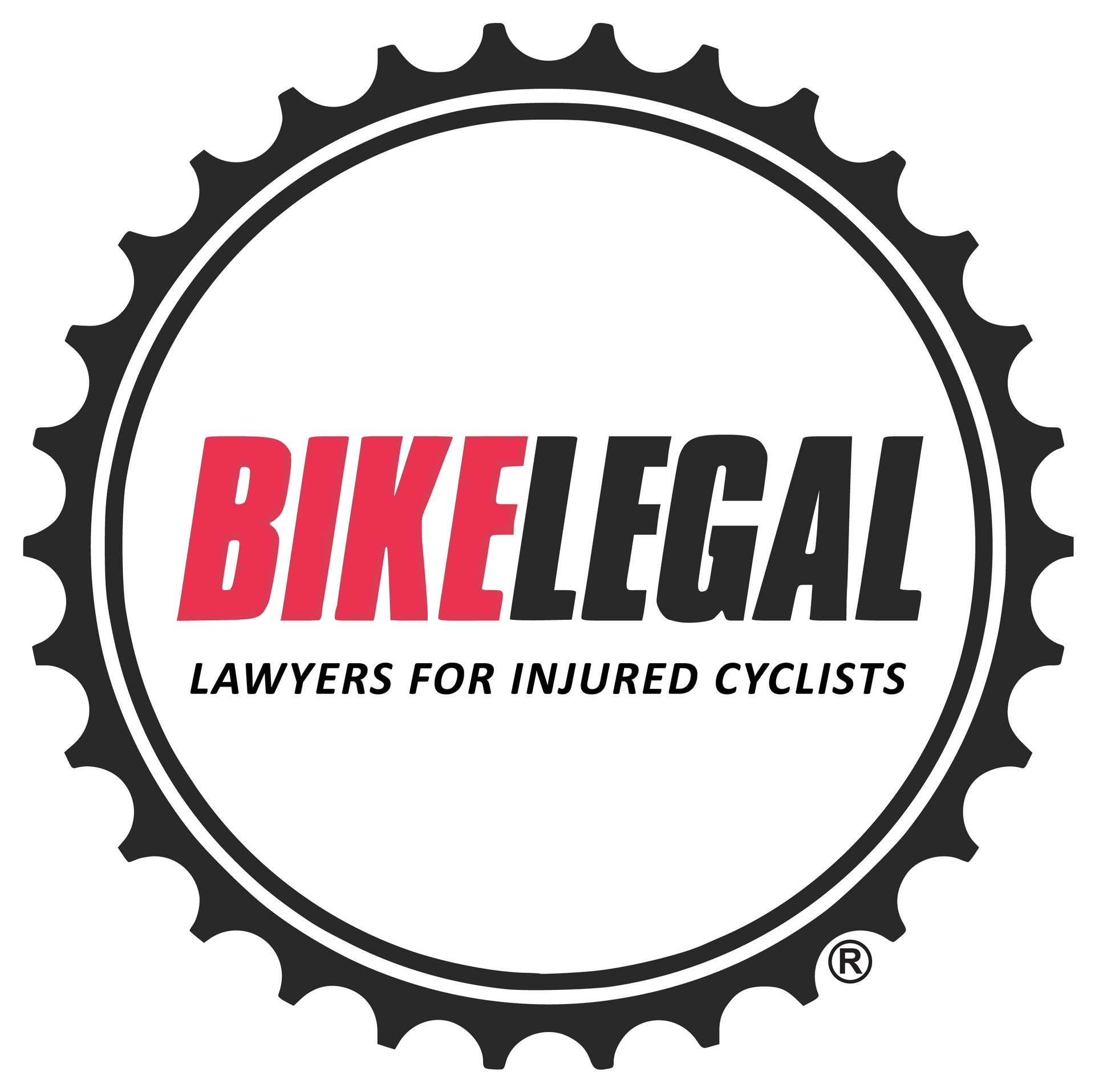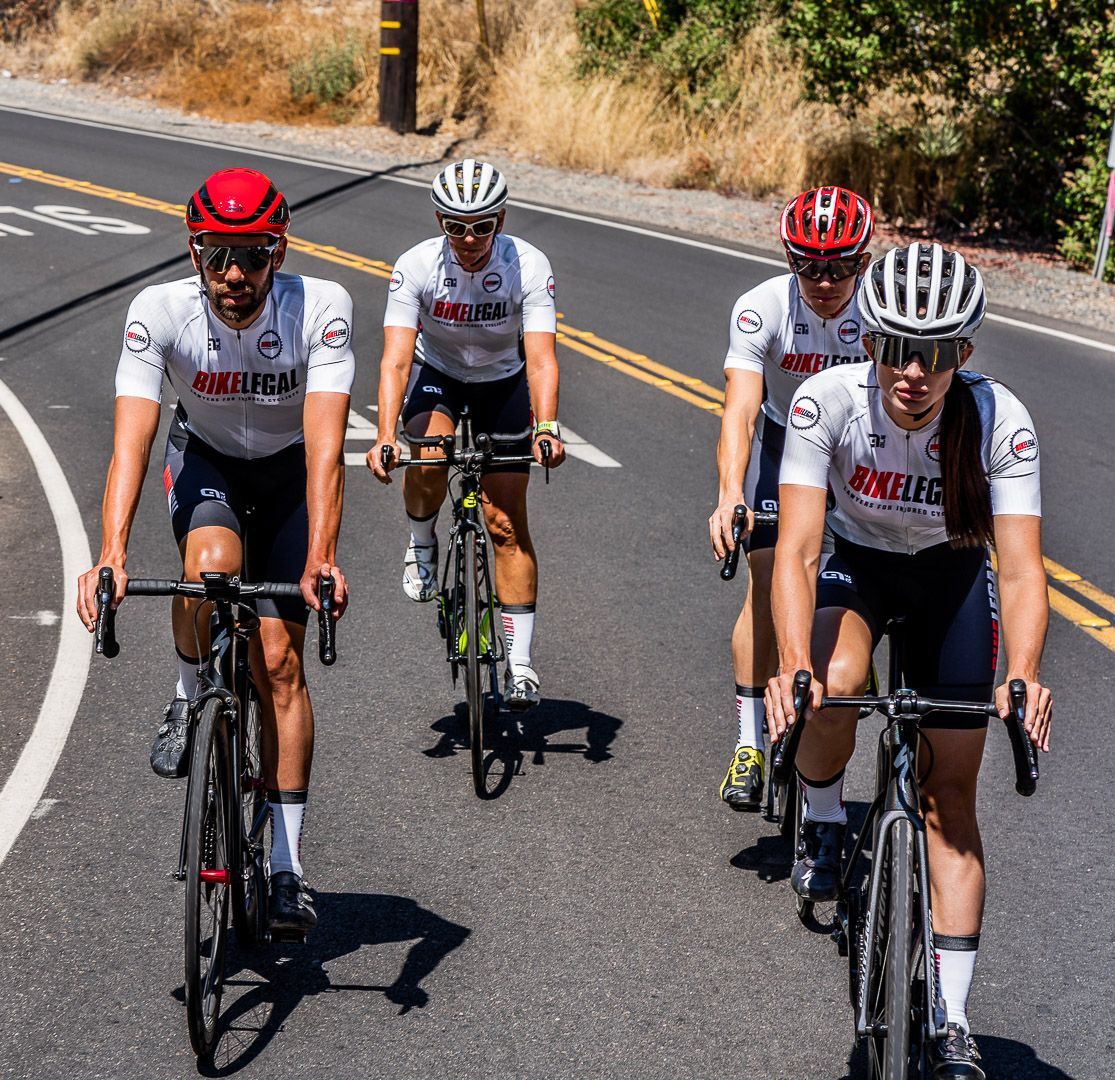Cyclist vs Animal Accident: Dealing with Wildlife on the Road
Follow us on
social media!

Cycling is more than just a form of exercise or a way to get around; it's a passion for many and a way to connect with the great outdoors. However, this connection comes with inherent risks, especially when it involves unpredictable wildlife.
Bicycle crashes involving wild animals are not just possible; they are a significant concern for cyclists in many regions. This article explores the various aspects of animal collisions, from common scenarios, legal considerations, seeking compensation, and preventive measures.
In this read, you'll discover:
- The real scoop on accidents involving cyclists and animals.
- Practical tips to dodge those unexpected wildlife encounters.
- The legal side of things: What happens after an animal collision?
- Eye-opening statistics and case studies that shed light on the issue.
- Essential safety measures every cyclist should adopt to keep nature's surprises at bay.
The Statistical Overview of Cyclist vs Animal Accident
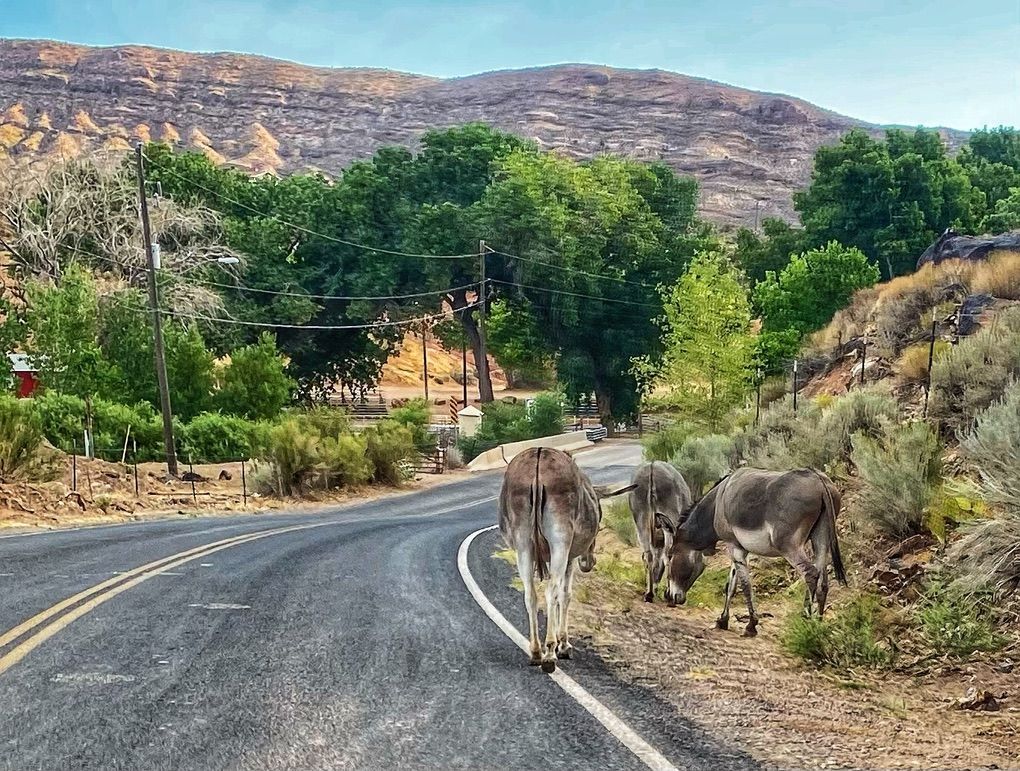
While the data on bicycle-animal collisions are not as detailed or comprehensive as those for motor vehicle incidents, the information available suggests that these encounters are a significant risk factor for cyclists, particularly in regions rich with wildlife.
These unpredictable interactions can result from a variety of situations where animals—ranging from deer, cattle, and birds to domestic pets like dogs—suddenly cross paths with cyclists. The consequences of such incidents are not merely anecdotal but represent a substantial risk that requires both awareness and strategic planning for cyclists.
Prevalence of Animal Encounters on the Road
Animal and cyclist accidents are more common than many might expect. Cycling, while making up a relatively small percentage of overall transportation, presents a disproportionately high risk of animal encounters, especially in areas where wildlife or free-roaming pets are prevalent.
This risk is accentuated by the fact that cyclists often share roads with motor vehicles, where visibility and maneuverability are reduced.
Here's a deeper dive into what every cyclist should know:
- Animal and cyclist accidents are more common than you think.
- According to a State Farm annual analysis, U.S. drivers have a 1 in 127 chance of a collision with an animal, with over 1.8 million animal collision insurance claims estimated between July 1, 2022, and June 30, 2023.
- West Virginia tops the list of states where drivers are most likely to hit an animal, with a likelihood of 1 in 38. Other states with high probabilities include Montana (1 in 53), Pennsylvania (1 in 59), Michigan (1 in 60), and Wisconsin (1 in 60).
- The analysis also noted that collisions with animals rose by 7.2% during the pandemic, with drivers striking an estimated 2.1 million animals on U.S. roadways between July 2020 and June 2021.
- The consequences can be severe. Injuries from these accidents can vary widely, from scrapes and bruises to fractures, head injuries, or even fatalities. The suddenness of these encounters leaves little room for reaction, often resulting in more severe outcomes.
- Prevention is key. Awareness of your surroundings, understanding animal behavior, and preparedness for unexpected encounters can significantly reduce the risk of cycling accidents with animals. Techniques such as slowing down in known animal crossing areas, using lights and bells, and practicing emergency maneuvers can make all the difference.
Bicycle Crashes with Domestic Animals Such as Dogs

A study by the National Electronic Injury Surveillance System (NEISS) shows that between 2006 and 2015, dogs were involved in 35,254 (0.67%) of the 5,184,057 emergency department visits for bicycle-associated injuries.
This statistic underscores the significant role that dogs play in cycling accidents, highlighting the need for increased awareness and preventive measures among cyclists and dog owners alike.
Here's how to deal with them:
- Slow down and keep calm. Dogs are often excited by the motion of cycling. Slowing down can make you less interesting to them.
- Use a firm voice. If a dog approaches, using a firm, assertive voice can sometimes stop it in its tracks. Saying "No!" or "Stay!" as you would with your own pet might work.
- Protect yourself. In cases where a dog acts aggressively, put your bike between you and the dog as a barrier. This can help protect you if the dog tries to get too close.
- Report uncontrolled dogs. If you encounter an uncontrolled dog that poses a danger, report it to local authorities. This not only helps you but also protects other cyclists and pedestrians.
Common Types of Bicycle Accidents with Wild Animals
Deer Hit and Run
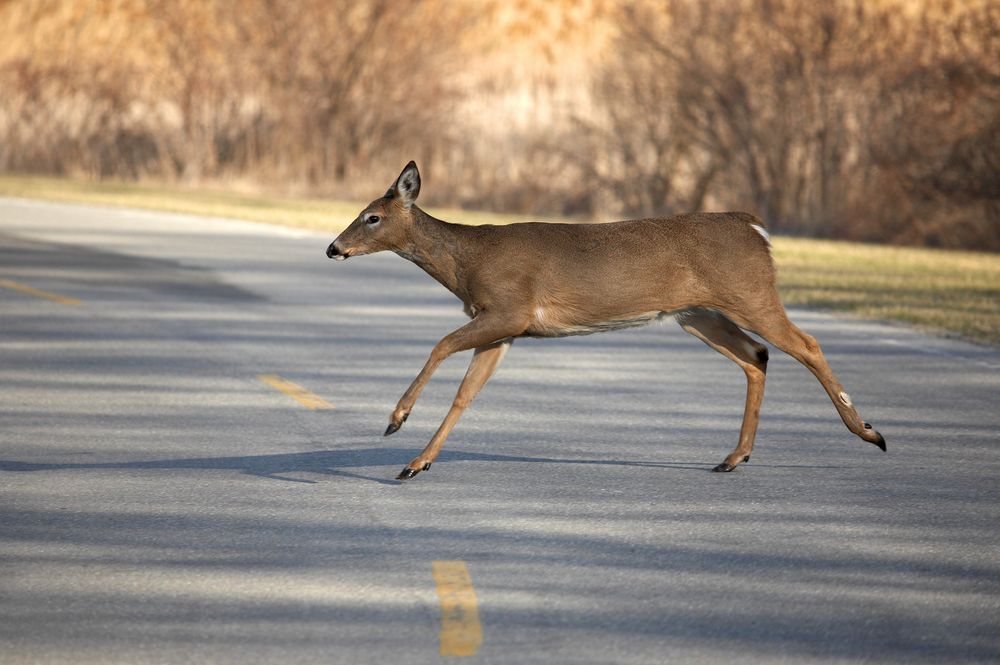
Among the most common and dangerous wildlife hazards for cyclists are deer. These large, fast-moving animals can appear suddenly, especially during their active periods at dawn and dusk. The impact of a deer collision can be catastrophic, leading to serious injuries or even fatalities.
Understanding the behavior of deer and being extra cautious during their peak activity times can help cyclists reduce the risk of such accidents.
Bicycle Crashes with Open Range Cattle
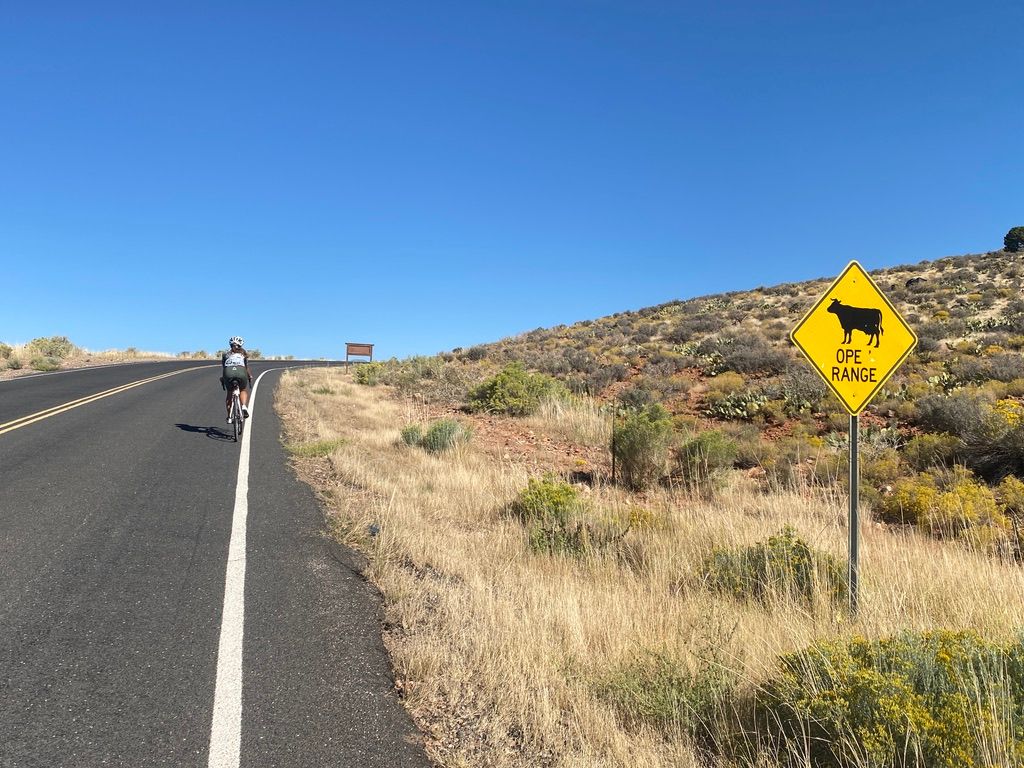
Bicycle crashes with open range cattle represent a unique and often unexpected challenge for cyclists, particularly in rural or less-developed areas where open range laws permit livestock to roam freely. These laws, which allow animals like cattle to graze openly without fencing, can lead to hazardous conditions on public roadways and paths used by cyclists.
One notable case involved a cyclist who collided with a cow standing in the middle of the road after the cyclist rounded a blind turn. Incidents like this underscore the dangers of cycling in open range areas, where animals can suddenly appear in the path of an oncoming bicycle. The size and unpredictability of cattle make collisions particularly dangerous, often resulting in significant injuries to the cyclist.
Understanding Open Range Laws
Open range laws date back to the times when extensive fencing was impractical across large tracts of land. In modern settings, these laws still exist in parts of the U.S., primarily in the West, where large areas of land are used for grazing.
Cyclists traveling through these areas need to be aware of these laws and the potential for encountering livestock at any time, especially around blind corners or on lightly traveled roads.
Risk Factors When Cycling on Open Ranges
The primary risk factor in these areas is the limited visibility and the unpredictable behavior of the cattle. Areas with rolling hills, winding roads, and limited sightlines are particularly risky.
Additionally, cattle are not typically accustomed to traffic, so their reactions can be unpredictable when they suddenly find themselves near fast-moving bicycles or other vehicles.
The Lesser-Known Danger of Bird Related Bicycle Accidents

Although less common than collisions with larger animals, bicycle crashes involving birds can present unique challenges and dangers to cyclists. These incidents, often overlooked, occur when birds either strike cyclists directly or cause them to swerve and crash.
During the spring breeding season, Australian magpies can become aggressive, often targeting cyclists and other passersby who unwittingly stray too close to their nests. These birds, highly territorial during this time, swoop down with startling speed and precision, sometimes striking their targets repeatedly.
While these attacks are generally meant as a warning to perceived threats, they can cause injuries and are a source of anxiety for many people venturing through magpie-inhabited areas. To mitigate these encounters, locals often resort to wearing helmets adorned with spikes to fend of these birds.
Understanding Bird-Related bicycle Incidents
Birds can collide with cyclists in a variety of environments, ranging from urban areas where pigeons and other city birds are prevalent, to rural and wilderness settings where larger birds like hawks or geese may be encountered. Bird strikes are often sudden and unexpected, leaving little time for cyclists to react.
Common Scenarios
- Direct Strikes: Larger birds, such as geese or hawks, can cause significant injury if they collide directly with a cyclist. These incidents may happen near bodies of water, parks, or in areas near bird nests during the nesting season when birds are particularly protective and aggressive.
- Avoidance Maneuvers: In attempts to dodge an approaching bird, a cyclist might swerve unexpectedly, leading to a loss of control and subsequent crashes. Such maneuvers can be particularly dangerous on busy roads or during group rides where space is limited.
- Distraction: Smaller birds flying close can distract a cyclist, leading to a momentary loss of focus that results in an accident. This is more common in areas with dense populations of small birds, such as urban parks or tree-lined streets.
Risk Factors
The risk of bird strikes increases in certain environments and times:
- Seasonal Activity: During migration seasons or breeding times, bird activity is heightened, and so is the risk of encounters.
- Geographical Locations: Areas near water bodies, heavily wooded areas, or those close to bird sanctuaries see more bird activity and consequently, higher chances of bird-related collisions.
- Time of Day: Dusk and dawn are peak activity times for many bird species, coinciding with lower visibility for cyclists which can increase the likelihood of incidents.
Bicycle Accidents Due to Insects: The Sting of Bees and Wasps
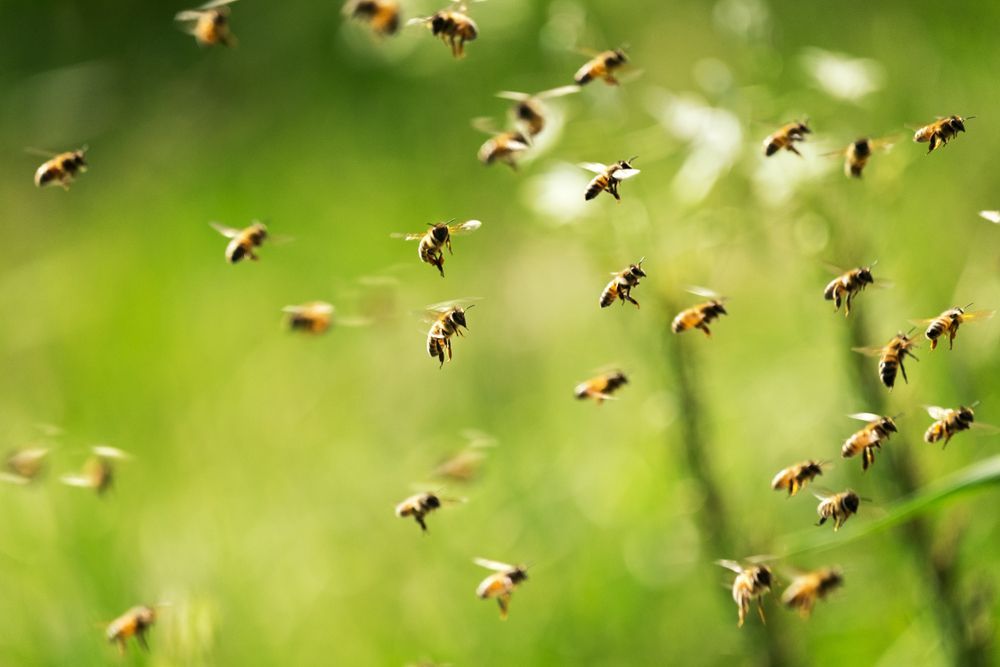
Insects like bees and wasps can be more than just a nuisance for cyclists; they pose real dangers that can lead to unexpected accidents. The sting of these insects not only causes immediate pain but can also result in cyclists losing control of their bikes. Understanding how to manage these risks is crucial for anyone cycling in areas where bees and wasps are common.
Common Bicycle Incidents Involving Bees and Wasps
- Direct Stings: A sting, particularly when unexpected, can cause a sharp pain that might make a cyclist jerk or swerve, potentially leading to a fall or collision. This is especially dangerous on busy roads or during high-speed rides.
- Allergic Reactions: For those allergic to stings, an encounter with a bee or wasp can be life-threatening, requiring immediate medical attention. Such emergencies can exacerbate the situation, causing panic and immediate stopping without regard to surrounding traffic.
- Swarm Encounters: Occasionally, cyclists might unintentionally ride through an area where bees or wasps are swarming or have a nest. This can lead to multiple stings and a high likelihood of losing control of the bicycle.
Risk Factors
Certain factors increase the risk of insect-related bicycle accidents:
- Seasonal Activity: Bees and wasps are more active during warmer months, especially late spring through early fall. During these times, their presence on or near roads and trails is significantly higher.
- Environmental Considerations: Areas with abundant flora and less urban development are likely to have higher populations of bees and wasps. Riding through gardens, parks, or rural paths can increase the likelihood of encounters.
- Time of Day: Insects are most active during the warmer parts of the day, usually from mid-morning to late afternoon, which coincides with peak cycling hours for many people.
Safety Tips for Cyclists
To reduce the risk of accidents caused by bees and wasps, cyclists can adopt several precautions:
- Cover Up: Wearing long sleeves and pants, even in warmer weather, can protect against stings. Glasses or goggles can protect the eyes not just from insects but also from dust and debris.
- Avoid Known Areas: If aware of areas with high insect activity or known nests, cyclists should avoid these routes or approach with heightened caution.
- Remain Calm: If a bee or wasp lands on you, try to remain calm and avoid swatting it away, as this can provoke a sting. If safe, stop and gently remove the insect from your clothing.
- Carry Medication: For those with known allergies to insect stings, carrying an epinephrine auto-injector (EpiPen) is essential and can be life-saving in the event of a sting.
Bicycle Crashes Due to Small Mammal Hazards: Squirrels and Chipmunks
Small mammals such as squirrels and chipmunks, while seemingly innocuous, can cause significant hazards for cyclists. These agile and unpredictable creatures often dart across paths and roads without warning, posing a risk for sudden swerves or crashes as cyclists attempt to avoid a collision.
Common Scenarios Involving Small Mammals
- Direct Collisions: Squirrels or chipmunks may run directly into the path of a bicycle, leading to potential front wheel incidents where the cyclist might lose balance and crash.
- Evasive Actions: In attempts to avoid hitting these small animals, cyclists might make sudden and sharp turns, which can lead to falls, especially at high speeds or on slippery surfaces.
- Chain Reaction Accidents: On busy trails or roads, swerving to avoid a small animal can also affect nearby cyclists or vehicles, potentially leading to multi-party accidents.
Risk Factors
Factors that increase the risk of encounters with small mammals include:
- Environment: Wooded areas, parks, and neighborhoods with large populations of trees and shrubs are common habitats for squirrels and chipmunks.
- Time of Year: Autumn is particularly risky as many small mammals are more active gathering food for the winter.
- Time of Day: Early morning and late afternoon are peak activity times for these creatures as they forage for food.
Safety Tips for Cyclists
Cyclists can take several steps to mitigate the risks associated with small mammals:
- Stay Alert: Keep an eye on the edges of the road or path, where small mammals are likely to enter from. Being aware of your surroundings allows for more reaction time.
- Maintain Control: Keep hands firmly on the handlebars and be ready to brake smoothly rather than swerving. Practice braking safely in different conditions.
- Slow Down: Reducing speed in areas known for high wildlife activity can provide more time to react safely to an unexpected animal crossing.
- Use Lights and Bells: In lower visibility conditions, use lights to see and be seen. Bells or other noise-making devices can help scare away small animals before they cross your path.
Legal Considerations and Seeking Compensation for Bicycle Accidents Involving Animals
Bicycle accidents involving animals requires understanding the differences in liability and negligence associated with wild versus domestic animals.
Legal Framework: Wild vs. Domestic Animals
Wild Animals: When a bicycle accident involves a wild animal, it generally falls under the category of 'acts of God,' a legal term used to describe events outside of human control. In these cases, there is rarely a negligent party unless it can be shown that the condition of the property or road contributed to the accident (such as lack of signage in an area known for wildlife crossings).
Domestic Animals: Accidents involving domestic animals, such as dogs, horses, or livestock, often have clearer pathways for seeking compensation because these animals have owners. Owners are responsible for restraining and controlling their animals to prevent foreseeable harm. If an owner fails to properly secure their animal, and it leads to an accident, the owner can be held liable under negligence laws.
Negligence in Animal-Related Bicycle Accidents
Negligence plays a critical role in determining liability in accidents involving animals. The distinction between wild and domestic animals greatly influences the application of negligence.
Negligence with Domestic Animals: If a cyclist is injured due to a domestic animal, proving owner negligence is key. This might involve demonstrating that the owner knew of the animal's propensity to chase or jump at bicycles but failed to take adequate measures to prevent the animal from escaping or interacting with cyclists.
Note that there are some exceptions in cases where a dog acted out of character. Not all pet owners may be liable for the incident. Laws regarding dog-related accidents can vary by state, county, and city, so the specifics of liability may differ based on local regulations.
Negligence with Wild Animals: Establishing negligence in incidents involving wild animals is more complex. Typically, there is no negligent party unless it can be shown that the entity responsible for maintaining the road failed to provide adequate warnings or take necessary precautions in areas known for high animal activity.
Pathways for Compensation of Injuries and Damages
Seeking compensation for injuries sustained in bicycle accidents involving animals depends on several factors, including the type of animal involved and the circumstances of the accident.
Insurance Compensation: Understanding insurance coverage is crucial in the aftermath of a cyclist-animal accident. Here's what to consider:
- Medical Expenses: Cyclists should review their health insurance policies for coverage of medical treatment following an accident. Additionally, some auto insurance policies offer coverage for accidents involving cyclists.
- Homeowners and Public Liability Coverage: Some homeowner's insurance policies include public liability coverage, which might provide compensation if a cyclist is injured on someone else's property. It's worth reviewing your policy to understand what's covered.
Legal Action Against Owners: In cases involving domestic animals, cyclists may pursue claims directly against the animal's owner. Compensation can be sought for medical expenses, lost wages, pain and suffering, and any other damages resulting from the accident.
Government or Road Authority Liability: If a cyclist can prove that a government entity or road authority negligently failed to address known risks associated with animal crossings (such as missing signage or poorly maintained fencing in areas known for livestock or wildlife), they might be able to claim compensation from that entity.
No-Fault Insurance: In some regions, no-fault insurance laws may allow cyclists to receive compensation for medical expenses and lost earnings, regardless of who was at fault. This can be particularly useful in accidents involving wild animals, where no direct negligence may be involved.
Understanding these legal nuances and pathways for compensation is crucial for cyclists who have been involved in accidents with animals. Given the complexities involved, consulting with a legal professional specializing in animal-related bicycle accidents is crucial to determine if there is a case.
After an Encounter
If you do have an accident involving an animal, knowing the steps to take can help manage the situation:
- Check for injuries. Your safety comes first. If you've sustained a serious injury, seek medical treatment immediately and/or call 911.
- Document the incident. If a pet caused the accident, try to identify the dog owner. This information can be crucial if you need to file a civil personal injury claim.
- Consider your insurance options. Check if your household insurance policy or public liability cover includes incidents involving animals. This can be vital in covering medical expenses or damages.
While encounters with animals and pets can't always be avoided, being prepared can significantly reduce the risk of cycling accidents. Remember, staying aware, understanding how to react, and knowing your rights and options if an accident occurs are key to enjoying a safe cycling experience.
For cyclists who find themselves needing to navigate the aftermath of an animal collision, professional help from Bike Legal Firm can be invaluable. Whether it's dealing with insurance claims or pursuing a civil personal injury claim, having the right support can make all the difference.
Seeking Legal Advice
Given the complexities involved in cyclist-animal accidents, seeking legal advice from a team of knowledgeable attorneys can help navigate the legal process, from filing insurance claims to pursuing a civil personal injury claim if applicable.
At Bike Legal, we can also advise on the best course of action based on the specifics of the accident, including the potential for compensation for serious injury or damage to property.
Safety Precautions for Cyclists to Prevent Accidents with Animals
Cycling through landscapes shared with wildlife and domestic animals presents unique challenges. Encounters with many animals, from large animals like deer to smaller ones like dogs, can lead to unexpected and potentially dangerous situations.
Here are some safety precautions to help cyclists navigate these encounters and prevent accidents.
Stay Alert in Known Animal Areas
Awareness is your first line of defense. Many animals are most active during dawn and dusk, so extra caution during these times is crucial.
Pay attention to animal crossing signs and known habitats, especially when cycling in rural or wooded areas. Large animals, such as deer, can suddenly appear at and crossroads, so slowing down and being prepared to stop can prevent collisions.
Use Lights and Make Noise
Making yourself known to animals can often prevent them from darting in front of you. Use lights and consider a bell or horn, especially if you're cycling in areas with high animal activity. The sound can alert animals to your presence, giving them time to move away from your path.
Keep a Safe Distance
If you encounter animals on or near the road, slow down and give them plenty of space. Many animals, especially large ones, can be unpredictable if they feel threatened. Keeping a safe distance reduces the risk of startling them and causing a sudden, unsafe movement.
Know How to Handle Dogs
Encounters with dogs are common in both urban and rural areas. If a dog approaches, slow down and avoid making sudden movements. If the owner is nearby, they may be able to call the dog away.
If an uncontrolled dog becomes a threat and the owner knows of its behavior but does not take precautions, there may be legal implications. In such cases, having insurance coverage that includes incidents involving animals can provide peace of mind and protection.
Enhance Your Bike Handling Skills
Improving your ability to quickly maneuver can be invaluable, especially when avoiding animals. Practice emergency stops and quick turns in a safe area to enhance your reaction skills. This can be particularly useful on existing cycle paths where you might encounter pets or wildlife unexpectedly.
Wear Protective Gear
Always wear a helmet and consider other protective gear like gloves and padded clothing. In the event of a fall or collision, this can significantly reduce the risk of serious injury.
Review Your Insurance Coverage
Ensure your insurance coverage includes incidents involving animals. This can provide financial protection in case of damage to your bike or personal injury. Knowing your policy details can also inform you of the steps to take immediately following an incident.
By adopting these safety precautions, cyclists can significantly reduce the risk of accidents involving animals. Staying alert, prepared, and informed are key strategies in sharing the roads and trails safely with our animal neighbors.
Stay Safe on Two Wheels in the Wild
Navigating the roads less traveled doesn't have to be a journey you take alone. At Bike Legal, we're here to ensure that your cycling adventures, no matter how wild, are backed by expert legal support. From understanding your rights to ensuring you're covered in the event of an animal encounter, we're your ally on and off the road.
Contact us today for a free consultation and ride with confidence, knowing we've got your back.
Read Next
- AAA Now Offers Bicycle Roadside Assistance
- Precautions for Bicycle Riders After an Accident
- 9 Ways To Prevent Accident Injuries While Cycling
FAQs
Q: How Do you deal with stray dogs while cycling?
If a dog chases you while you're on a bicycle, try to remain calm and use these strategies:
- Voice Commands: Use a loud, firm voice to issue commands like "No!", "Bad dog!", or "Go Home!".
- Deterrent Spray: Carry pepper spray or a commercial dog deterrent spray, and use it as directed by the manufacturer.
- Stop Riding: Consider stopping altogether; often, the dog will stop as well, giving you a chance to slowly walk or ride away.
- Use Your Bike as a Barrier: If the situation escalates, get off your bike and use it as a barrier between yourself and the dog.
- Avoid Outrunning the Dog: Only try to outrun the dog if you are confident in your ability to do so safely without the dog catching you.
Q: What is the most common injury falling off a bicycle?
The most common injury resulting from a bicycle fall is typically road rash, which is a type of abrasion caused by the skin sliding across the pavement.
Other common injuries include bruises, cuts, and fractures, particularly to the wrists, arms, and collarbone, as these areas are often impacted when trying to break a fall. Head injuries are also a significant risk, especially if a helmet is not worn.
Q: Should I contact a lawyer if I have a cycling accident with an animal?
Yes, it is always beneficial to consult with a bicycle accident lawyer after a cycling accident involving an animal, especially if the accident leads to injuries or damages. A bicycle accident attorney can help you understand your rights and any potential claims you might have for compensation, depending on the circumstances of the accident.
This could include determining liability, whether it's a pet owner's responsibility, a motorist's involvement, or other factors. Additionally, a lawyer can assist with navigating any legal proceedings and dealing with insurance claims effectively.
